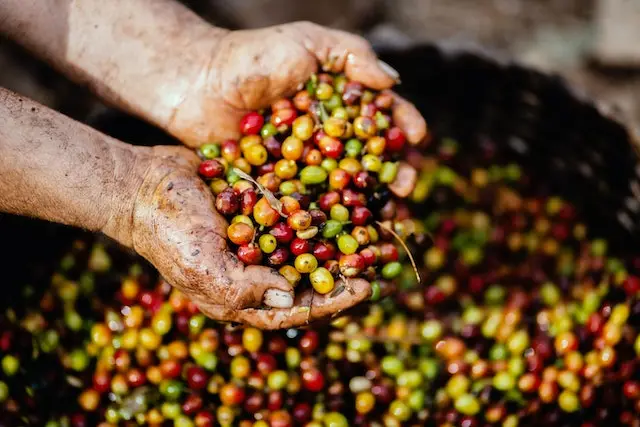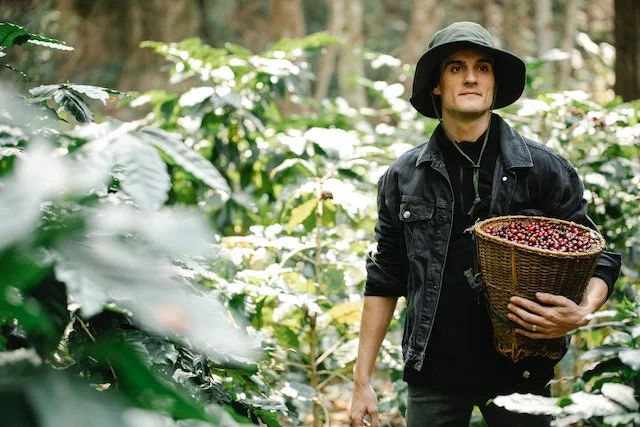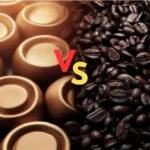Water Conservation in Coffee Processing: Sustaining Our Brew
Water conservation in coffee processing is essential to ensure the future sustainability of the global coffee industry. With innovative techniques and technologies, we can transform coffee processing from a water-intensive endeavor to a sustainable system that recycles and replenishes water resources. Read on to learn about the water footprint of coffee production, cutting-edge solutions, and how to support a water-wise coffee culture.
Key Takeaways
- High Coffee Processing Water Use: Traditional coffee processing consumes vast amounts of water, impacting the environment, communities, and economies.
- Innovative Solutions Exist: Cutting-edge technologies like water-efficient machines and rainwater harvesting can significantly reduce water consumption in coffee processing.
- Certifications Promote Sustainability: Certifications like “Rainforest Alliance” support eco-friendly coffee production, benefiting both the environment and farmers.
Collective Efforts Needed: To create a water-wise coffee culture, cooperation among coffee stakeholders is essential to reduce the industry’s water footprint.
Understanding Coffee Processing and Where the Water Goes
Coffee beans undergo primary and secondary processing after harvest to prepare them for roasting. The two main methods are washed processing and natural processing.
Washed coffee processing uses substantial amounts of water to remove fruit pulp and residue from beans. The steps include:
- Pulping – Coffee cherries are mechanically depulped with water soon after harvest to remove the outer skin and pulp surrounding the beans. This pulping stage alone can use up to 60 liters of water per 1 kg of coffee cherries.
- Fermenting – After pulping, the beans sit in fermentation tanks full of water for 12-48 hours. This allows any remaining sticky mucilage coating the beans to naturally break down and dissolve.
- Washing – The fermented beans are then thoroughly washed with fresh water. Multiple rinses help remove all traces of mucilage residue.
- Drying – Finally, the raw green coffee beans are dried either by machine or laid out in the sun until reaching a safe moisture level for storage and export.
In contrast, natural coffee processing uses very little added water, instead drying the whole coffee cherry intact before hulling off the dried outer layers. But this method can result in lower quality coffee.
Clearly, water conservation efforts in coffee processing will need to address the water-intensive washed processing method while maintaining quality.

The Staggering Water Usage to Produce Coffee
Many life cycle assessments and water footprint studies have revealed the immense volumes of water used in conventional coffee processing:
- It can take up to 140 liters of water to produce just one cup of coffee.
- To produce just 2 pounds of roasted coffee beans, a typical washed process may use up to 110 gallons of water.
- Global coffee production is estimated to consume over 1 trillion liters of water per year, most of it for processing the beans.
This level of water consumption has consequences:
- Local water sources like rivers and groundwater are being depleted, damaging communities and ecosystems.
- As clean water becomes scarcer, coffee farmers face rising costs to access water, harming incomes.
- Polluted wastewater from processing contaminates rivers and streams as well as groundwater supplies.
Clearly, reducing the water footprint of coffee processing is crucial for communities, ecosystems, and the industry’s economic sustainability.
Innovative Solutions for Water Conservation
Thankfully, with some creativity, coffee processing can become a low water enterprise. New technologies and simple methods can drastically cut water usage while maintaining quality.
Water-Efficient Pulping Machines
Special low-water pulping machines detach the coffee beans from fruit pulp using minimal water. Examples include:
- Penagos Pulpers – These recirculate pulping water with small periodic additions of fresh water, using 50-70% less.
- J-Coffee Pulpers – Rubber fins remove the pulp with little water, instead of traditional water baths.
- Tatiana Pulpers – Sprays of pectinase enzyme assist in pulp removal, further reducing water requirements.
On-Farm Water Treatment and Recycling
Some farms are installing water treatment systems to recycle coffee processing water several times.
- Treatment methods like sedimentation, aerobic systems, and wetland filtering remove contaminants.
- Recycled water can be used for cleaning equipment or irrigation, closing the loop.
- Farms can lower their water demand by over 90% compared to conventional practices.
Rainwater Harvesting
Capturing and storing rainwater provides farms with an entirely renewable water source for processing and other needs.
- Water is collected from roofs and stored in ponds or tanks.
- Drip irrigation distributes the rainwater to coffee crop fields efficiently.
- Solar pumps enable easy rainwater distribution at low operating cost.
Eco-Friendly Drying Solutions
Lastly, sustainable drying methods further reduce processing water use:
- Solar dryers use free renewable energy to dry coffee beans, avoiding fuel or electricity.
- Mechanical dryers employ heat recovery systems to recapture evaporating moisture.
- Greenhouse-covered raised beds protect drying beans from rewetting during rains while enabling ample air circulation.

On-Farm Success Stories Around the World
Progressive coffee farms across the globe have adopted these water-saving techniques with proven results:
- Finca El Puente: This El Salvadorian farm recycles 90% of pulp water through on-site filtration and rainwater catching. Their reduced water footprint meets “Rainforest Alliance Certified” standards.
- NDumberi Coffee Co-op: In Kenya, this cooperative installed Penagos Eco-pulpers reducing pulp water use by 70%. Their sustainability earned “UTZ Certified” status.
- Belcoop: A co-op in Belize cut water consumption 85% by reusing pulping byproducts to fertilize another farm. This creative recycling achieved “Smithsonian Bird Friendly” certification.
- Muungano Farmers Co-op: Kenyan smallholder farmers here built rainwater catchments and solar dryers decreasing water use 65%. They market their low-impact coffee locally as a “Water Wise” brand.
Water Savings Results on Progressive Farms
| Farm | Water Conservation Method | Savings |
| Finca El Puente | Water recycling & rain harvesting | 90% less water |
| NDumberi Co-op | Eco-pulping machines | 70% reduction |
| Belcoop | Innovative byproduct reuse | 85% decreased consumption |
| Muungano Co-op | Rainwater and solar drying | 65% smaller footprint |
These real-world examples demonstrate that with the right solutions, significant water conservation in coffee processing is achievable.
Why Coffee Needs a Water Revolution
There are compelling environmental, economic and social reasons why the entire coffee sector must embrace water stewardship:
Environmental Reasons
- Preserving freshwater resources used by rural communities and critical ecosystems
- Preventing further pollution of local waterways
- Building climate change resilience as water insecurity rises
Economic Incentives
- Reducing water costs for struggling coffee farmers
- Achieving water self-sufficiency for coffee-growing communities
- Accessing sustainability-driven specialty coffee markets
Social Benefits
- Securing the livelihoods of smallholder coffee farmers
- Improving food and water security for coffee-growing regions
- Encouraging collective stewardship of shared water resources
A water-wise revolution aligns with both ethical values and pragmatic interests across the coffee industry and wider society.

Challenges in Mainstreaming Sustainable Coffee Processing
Transforming coffee processing does face real hurdles that must be acknowledged:
- High upfront costs of water-efficient infrastructure require significant investment that is daunting for smallholders.
- Limited technical expertise prevents many farmers from implementing advanced water management techniques independently.
- Resistance to change from some who insist traditional methods yield better quality, unaware that eco-innovation has matched or exceeded it.
- Insufficient consumer demand for certified sustainable coffee to incentivize producers to adopt water conservation.
But none of these challenges are insurmountable with collective effort. Progress is already being made through pioneering farms.
Building a Water-Wise Coffee Culture
To make water conservation the norm across coffee lands, participation is needed from the entire coffee community:
Farmers and Cooperatives
- Investing in water-efficient infrastructure and training
- Pursuing eco-certifications to open up sustainability-driven markets
- Sharing successful techniques with peers to spread knowledge
Governments
- Subsidizing costs of upgrading processing infrastructure
- Strengthening environmental regulations around water use
- Funding research on water-saving coffee innovations
Industry
- Committing to sustainably source coffee from green suppliers
- Financing pilot programs to implement eco-upgrades
- Promoting case studies that prove sustainability succeeds
Consumers
- Choosing certified sustainable coffee when shopping
- Supporting brands that actively conserve water in their supply chain
- Joining marketing campaigns for water-wise coffee production
Through combined effort, the goal of sustainable coffee processing can be made real.

The Future of Water Conservation in Coffee
The coffee sector stands at a turning point as water risks threaten crop viability and rural livelihoods. But a more hopeful path beckons through innovation and collective responsibility.
Pioneering farms have begun to shift course toward water stewardship. Many challenges remain, but models for progress exist. With passion, initiative, and cross-industry partnership, a flourishing water-wise future awaits. Processing can replenish water reserves rather than drain them.
Sustainable techniques allow coffee production and ecological values to align. As conscientious coffee lovers, we can hasten this future through our purchasing decisions and advocacy. The time to act is now. Our morning cup can drive change.
Conclusion
From crop to cup, the journey of coffee depends on water. As consumers of this beloved beverage, we must reflect on its true environmental impact and our role in driving change. With creativity and purpose, coffee processing can be transformed from a water-intensive practice into a model of sustainability that protects precious resources.
Our everyday coffee rituals can catalyze this positive change. By caring where our coffee comes from, we reshape an industry into a force for good. With technology and values flowing in concert, water can bring life to coffee lands for generations to come. We need only pursue this vision – one sip at a time.








